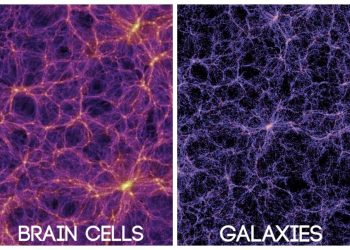Heriot-Watt University researchers have brought to light an astonishing discovery—an enormous crater, 9 kilometers wide, hidden 300 meters below the Atlantic seabed near West Africa. Known as the Nadir Crater, this massive impact site paints a picture of a cataclysmic event that unfolded millions of years ago.
This newly found crater could be more than just an isolated anomaly. It closely matches the timing of the infamous Chicxulub impact in Mexico, the asteroid strike long believed to be the primary cause of the dinosaurs’ extinction. The overlap in their timelines hints that these two asteroids might have worked in tandem, creating a devastating one-two punch that radically altered Earth’s history.
New Insights into Dinosaur Extinction
Dr. Uisdean Nicholson, who first discovered the Nadir Crater in 2022, initially estimated the asteroid responsible to be around 400 meters wide. However, further analysis using 3D seismic data revealed that the impactor may have been even larger—between 450 to 500 meters in diameter. This discovery provides new insights into the magnitude of the event that may have shaped the fate of life on Earth.
Nicholson and his team used seismic imaging to uncover the details of the crater. Their findings indicate that the asteroid likely struck Earth at an angle, coming in from the northeast at a speed of approximately 72,000 kilometers per hour. This low-angle impact generated a spiraling pattern of thrust ridges, offering clues about the asteroid’s trajectory.
The Ripple Effects: Tsunamis, Earthquakes, and Landslides
The impact didn’t just leave a scar on the ocean floor; it triggered a cascade of dramatic events. The force of the asteroid strike caused a massive earthquake, liquefying sediments deep beneath the seabed. The collision also generated an enormous tsunami, sending towering waves racing across the Atlantic. In its wake, landslides further reshaped the plateau margin, leaving lasting geological marks.
Through detailed 3D seismic data, the researchers could piece together the sequence of geological changes that followed. The crater’s formation created a central uplift, while soft sediments from the surrounding area flowed in, filling the depression and forming a visible rim. These seismic images provide unprecedented detail of what happened after the asteroid made impact.
Parallels with the Tunguska Event
While asteroids of this size have not been observed striking Earth in recent times, scientists draw comparisons to the 1908 Tunguska event in Siberia. During that event, a smaller asteroid—around 50 meters wide—exploded in the atmosphere, flattening trees over a vast area. The Nadir asteroid, however, was far larger, and the impact was much more catastrophic.
The next step in the research is to drill into the crater to collect samples. These will help scientists determine the exact age of the crater and provide deeper insights into the conditions surrounding the impact, such as the shock pressures involved. Understanding these events better can refine current models of crater formation in marine environments, offering fresh perspectives on how such massive impacts have shaped Earth’s geological history.
Join the Conversation!
Have something to share or discuss? Connect with us on Facebook and join like-minded explorers in our Telegram group. For the latest discoveries and insights, make sure to follow us on Google News.











